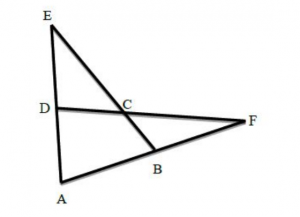GATE CS 2018
Question 1
What would be the smallest natural number which when divided either by 20 or by 42 or by 76 leaves a remainder ‘7’ in each case is_
Question 2
The chromatic number of the following graph is _________ .
Note - This was Numerical Type question.


Question 3
Consider a matrix [Tex]A = uv^T[/Tex] where [Tex]u = \\begin{pmatrix}
1\\\\
2
\\end{pmatrix}, v = \\begin{pmatrix}
1\\\\
1
\\end{pmatrix}[/Tex]. Note that [Tex]v^T[/Tex] denotes the transpose of v. The largest eigenvalue of A is ________ .
Note -This was Numerical Type question.
Question 4
What is the missing number in the following sequence?
2, 12, 60, 240, 720, 1440, .... 0
Question 5
Which one the following is a closed form expression for the generating function of the sequence {an}, where an = 2n + 3 for all n = 0, 1, 2,...?


Question 6
"From where are they bringing their books? _________ bringing _________ books from _________."
The words that best fill the blanks in the above sentence are
Question 7
A __________ investigation can sometimes yield new facts, but typically organized once are more successful.
Question 8
What is the area of the circle which has the diagonal of the square as its diameter if the area of square is ' d ' ?
Question 10
In appreciative of social improvement completed in a town, a wealthy philanthropist decided to give gift of Rs. 750 to each male senior citizen and Rs. 1000 for female senior citizens. There are total 300 citizens and the 8/9th of total men and 2/3rd of total women claimed the gift. What is amount of money philanthropist paid?
There are 66 questions to complete.
Last Updated :
Take a part in the ongoing discussion

